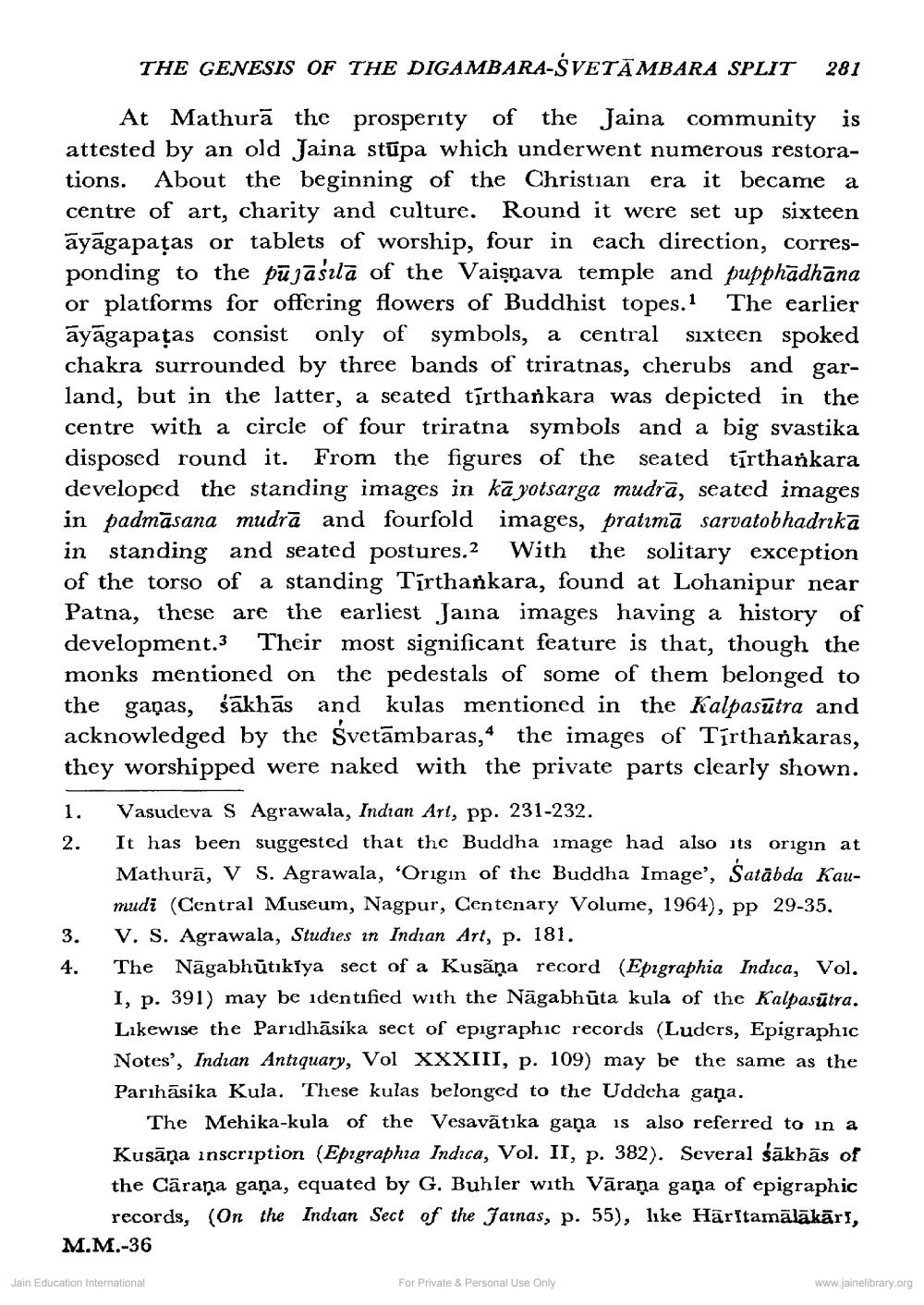________________
THE GENESIS OF THE DIGAMBARA-ŚVETĀMBARA SPLIT 281
At Mathura the prosperity of the Jaina community is attested by an old Jaina stūpa which underwent numerous restorations. About the beginning of the Christian era it became a centre of art, charity and culture. Round it were set up sixteen ayagapaṭas or tablets of worship, four in each direction, corresponding to the pūjāsilā of the Vaisnava temple and pupphādhāna or platforms for offering flowers of Buddhist topes.1 The earlier āyāgapaṭas consist only of symbols, a central sixteen spoked chakra surrounded by three bands of triratnas, cherubs and garland, but in the latter, a seated tīrthankara was depicted in the centre with a circle of four triratna symbols and a big svastika disposed round it. From the figures of the seated tirthankara developed the standing images in kāyotsarga mudrā, seated images in padmāsana mudra and fourfold images, pratimā sarvatobhadrikā in standing and seated postures.2 With the solitary exception of the torso of a standing Tirthankara, found at Lohanipur near Patna, these are the earliest Jaina images having a history of development. Their most significant feature is that, though the monks mentioned on the pedestals of some of them belonged to the gaņas, sākhās and kulas mentioned in the Kalpasūtra and acknowledged by the Svetambaras, the images of Tirthankaras, they worshipped were naked with the private parts clearly shown.
1.
2.
3.
4.
Vasudeva S Agrawala, Indian Art, pp. 231-232.
It has been suggested that the Buddha image had also its origin at Mathurā, V S. Agrawala, 'Origin of the Buddha Image', Śatābda Kaumudi (Central Museum, Nagpur, Centenary Volume, 1964), pp 29-35. V. S. Agrawala, Studies in Indian Art, p. 181.
The Nagabhūtikīya sect of a Kusana record (Epigraphia Indica, Vol. I, p. 391) may be identified with the Nagabhūta kula of the Kalpasūtra. Likewise the Paridhasika sect of epigraphic records (Luders, Epigraphic Notes', Indian Antiquary, Vol XXXIII, p. 109) may be the same as the Parihasika Kula. These kulas belonged to the Uddeha gana.
The Mehika-kula of the Vesavätika gana is also referred to in a Kusāņa inscription (Epigraphia Indica, Vol. II, p. 382). Several śākhās of the Caraṇa gana, equated by G. Buhler with Vāraņa gaṇa of epigraphic records, (On the Indian Sect of the Jamnas, p. 55), like Hārītamālākārī,
M.M.-36
Jain Education International
For Private Personal Use Only
www.jainelibrary.org




